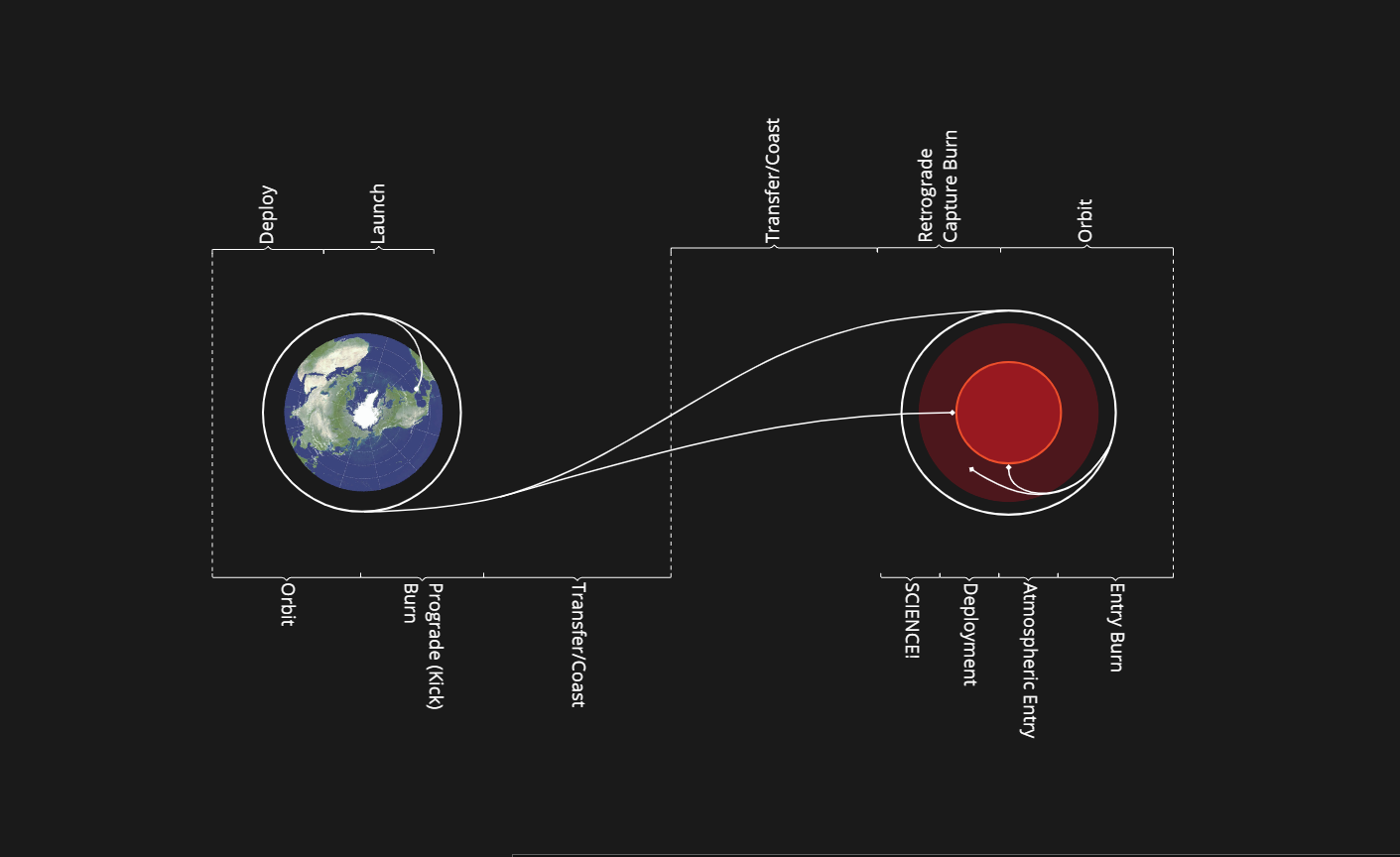Mission To Venus
Plans to send a satellite, a blimp and a lander to Venus
Mission profile and scientific objectives

Mission to Venus will launch at Cape Canaveral, Florida in 2036. The payload will be launched by "Falcon Heavy" and taken into a low Earth orbit where the payload will be deployed. The payload will remain in a orbit around the Earth until all systems are verified to be functional. Then "The RIDE" (kick booster) will fire it's engine and propels the payload to Venus. Once the burn is complete, "The RIDE" will detach from the rest of the payload, allowing the payload to transfer to Venus. Once detached, "The RIDE" will do a small burn to change it's trajectory, aiming to the surface of Venus. This stage will burn during atmospheric entry and therefore ensure that there is no space debris. Once the payload has reached Venus, the "CHONCC" will preform a capture burn. After the capture burn is complete, the payload stays in orbit until a suitable landing site is determined. Once the site is found, and aeroshell containing both "PATRICCCC" (Lander) and "VAPOR" (Blimp) will detach from "CHONCC" and start an entry burn. After atmospheric entry both "PATRICCC" and "VAPOR", will separate and deploy. "VAPOR" will inflate in atmosphere while "PATRICCC" will deploy a parachute. Once both are fully deployed, analysis and research may begin.
Once "CHONCC", "VAPOR" and "PATRICCC" are in their respective deployment zones. Scientific investigations can take place. The three main objectives are outline below:
Each will carry a range of scientific instruments. "PATRICCC" will determine mineral compositions as well as taking surface images. "VAPOR" will act as a floating "scientific lab", taking atmospheric readings as well as ariel pictures. "CHONCC" will take high resolution images of Venus as well as relaying all data back to earth.